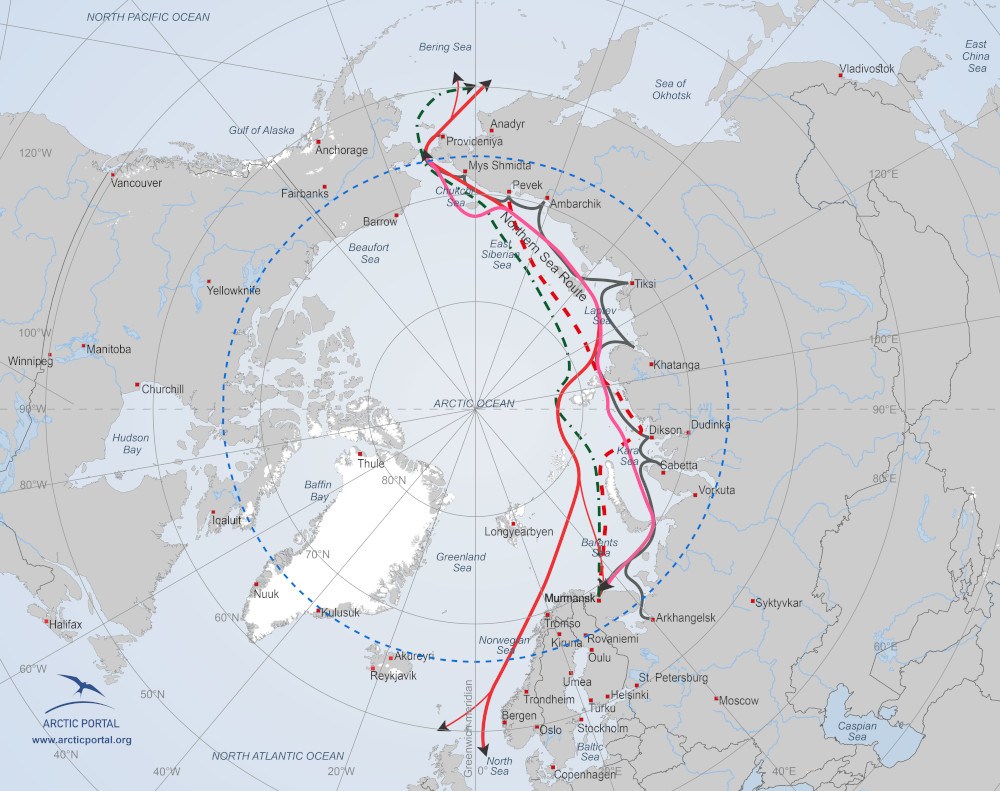The Northern Sea Route (NSR) or Northeast Passage runs from the northernmost parts of the North Sea across the icy waters of the Arctic Ocean north of Russia, east to the Chukchi Sea and Bering Straits where access to the North Pacific is reached. Several straits in the Passage can be classified as international.
Historical and Economic Background
The Northeast Passage which is also called the Northern Sea Route (NSR), is an established commercial seaway that was used for domestic transportation and played an important economic role for the Soviet Union around World War II.
Definitions and Distinctions
The course of NSR was defined in a Russian regulation in 1990 and is in fact (rather than theoretically), the middle part of the Northeast Passage. To that extent, the Northern Sea Route can be equated with the Northeast Passage if this simple fact is known.
Strategic Commercial Importance
It is the fact that Northeast Passage makes the distance between Europe and Asia up to three times shorter what allows commercial shipping companies to navigate in very efficient way, that is faster and cheaper.
Environmental Limitations and Climate Impact
As with the Northwest Passage, the Northeast Passage is limited for use because of extreme natural conditions based on the geographical location of the passage. However, if climate change continues to effectively bring warmer air to the area, condition of winds, ice and currents might result in more favorable sea route.
It was discovered that the Arctic ice cap is over 50% less than average in some areas on the Northeast Sea Route. That result of climate change allows ships to easily operate through its waters from Europe to Asia. However , changing climate does not resolve the legal issues and questions that rise if foreign ships use it as no specific universal agreement has been settled on that matter.
Recent Developments and Future Outlook
In the summer of 2012 sea ice was at an all time low since measuring began (the sea ice extent reached 3.41 million square kilometers). That resulted in extended shipping in the route. In August 2011 it took only eight days for the STI Heritage tanker to go from Murmansk in Russia to the Bering Sea. Russia is strengthening its fleet of icebreakers and will continue to use the route when it is possible, which is still only for a few months around the summertime.
Map: Arctic Portal (to view more maps please visit our Map Gallery)









